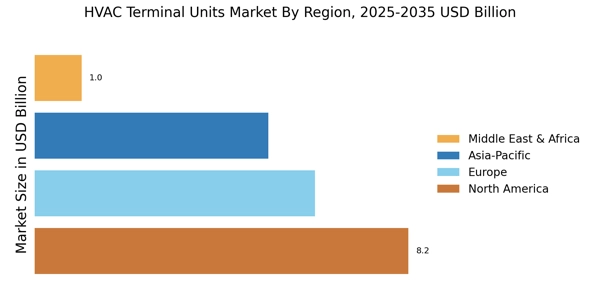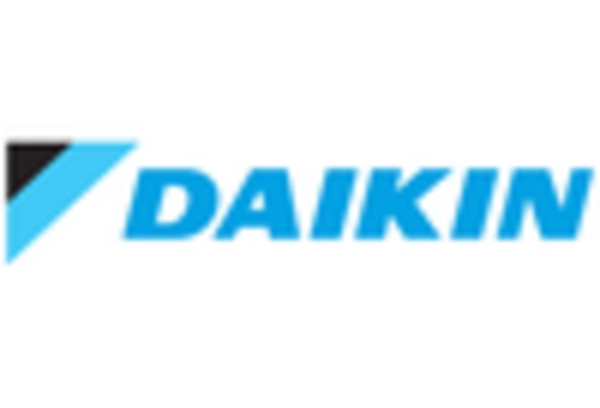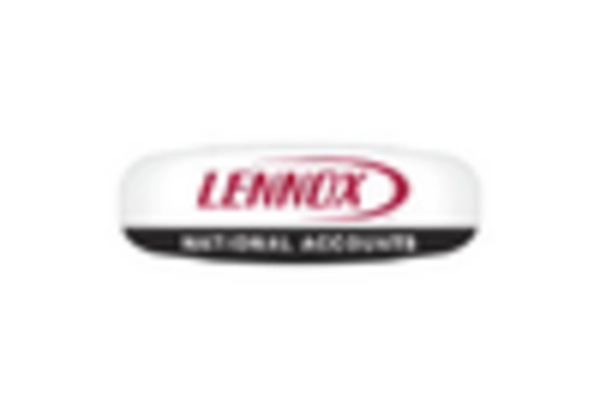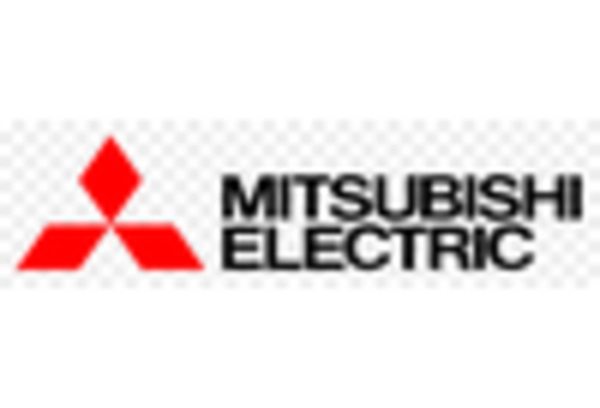Energy Efficiency Regulations
The Hvac Terminal Units Market is increasingly influenced by stringent energy efficiency regulations imposed by various governments. These regulations aim to reduce energy consumption and greenhouse gas emissions, prompting manufacturers to innovate and develop more efficient terminal units. For instance, the implementation of standards such as ASHRAE 90.1 has led to a notable increase in the adoption of high-efficiency HVAC systems. As a result, the market is witnessing a shift towards products that not only comply with these regulations but also offer enhanced performance. This trend is expected to drive growth in the Hvac Terminal Units Market, as consumers and businesses alike seek to lower operational costs while adhering to environmental standards.
Growth in Construction Activities
The Hvac Terminal Units Market is poised for growth due to the resurgence in construction activities across various sectors, including residential, commercial, and industrial. As new buildings are constructed, there is a corresponding need for efficient HVAC systems, including terminal units that cater to specific heating and cooling requirements. According to recent data, the construction sector is projected to expand significantly, driven by urbanization and infrastructure development. This growth is likely to create substantial opportunities for manufacturers in the Hvac Terminal Units Market, as they seek to provide tailored solutions that meet the demands of modern construction projects.
Increased Focus on Sustainability
Sustainability is becoming a central theme in the Hvac Terminal Units Market, as consumers and businesses alike prioritize eco-friendly solutions. The demand for terminal units that utilize renewable energy sources and have lower environmental impacts is on the rise. Manufacturers are responding by developing products that not only meet energy efficiency standards but also incorporate sustainable materials and technologies. This shift towards sustainability is further supported by government incentives and consumer preferences for green building certifications. As a result, the Hvac Terminal Units Market is likely to experience growth as stakeholders increasingly seek to align their operations with sustainable practices.
Rising Demand for Indoor Air Quality
The growing awareness of indoor air quality (IAQ) is significantly impacting the Hvac Terminal Units Market. With an increasing number of studies linking poor air quality to health issues, there is a heightened demand for HVAC systems that can effectively filter and purify air. This trend is particularly evident in commercial buildings, where regulations often require improved IAQ standards. The market is responding by developing terminal units equipped with advanced filtration technologies and air quality monitoring systems. As a result, the Hvac Terminal Units Market is likely to expand as businesses invest in systems that enhance employee health and productivity while ensuring compliance with IAQ regulations.
Technological Advancements in HVAC Systems
Technological advancements are reshaping the Hvac Terminal Units Market, with innovations such as variable refrigerant flow (VRF) systems and smart thermostats gaining traction. These technologies not only improve energy efficiency but also enhance user control and comfort. The integration of IoT devices allows for real-time monitoring and management of HVAC systems, leading to optimized performance and reduced energy costs. As these technologies become more accessible, the market is expected to see a surge in demand for advanced terminal units that incorporate these features. This shift indicates a potential for growth in the Hvac Terminal Units Market as consumers increasingly prioritize smart and efficient solutions.


















Leave a Comment